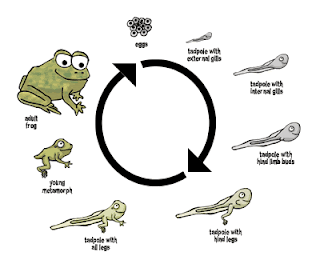Saturday 10 December 2011
Friday 9 December 2011
Thursday 8 December 2011
Observing and Comparing Lengths and Heights
Ali Ahmad
The picture above shows Ali and Ahamd. They have different heights.
A B
The picture above shows Ali and Ahamd. They have different heights.
- Ali is taller than Ahmad.
- Ahmad is shorter than Ali.
A B
- The table A is shorter than the table B.
- The table B is longer than the table A.
Wednesday 7 December 2011
An invertebrate is an animal without a backbone.
An invertebrate is an animal without a backbone. The group includes 95% of all animal species[1] — all animals except those in the chordate subphylum Vertebrata (fish, amphibians, reptiles, birds, and mammals).
Facts about Reptiles
Reptiles are a group of vertebrate animals. The name "reptile" comes from Latin and means "one who creeps". All living reptile species are cold blooded, have scaly skin, and lay cleidoic eggs. They also have some less obvious features. They excete uric acid (instead of urea), and have a cloaca. A cloaca is a common vent (opening) for the intestines, urinary tract and reproductive ducts. Reptiles also share an arrangement of the heart and major blood vessels which is different from that of mammals.
Facts about mammals
Mammals (formally Mammalia) are a class of vertebrate, air-breathing animals whose females are characterized by the possession of mammary glands while both males and females are characterized by sweat glands, hair and or fur, three middle ear bones used in hearing, and a neocortex region in the brain.
Mercury Thermometer
A mercury-in-glass thermometer, invented by German physicist Daniel Gabriel Fahrenheit, is a thermometer consisting of mercury in a glass tube. Calibrated marks on the tube allow the temperature to be read by the length of the mercury within the tube, which varies according to the heat given to it. To increase the sensitivity, there is usually a bulb of mercury at the end of the thermometer which contains most of the mercury; expansion and contraction of this volume of mercury is then amplified in the much narrower bore of the tube. The space above the mercury may be filled with nitrogen or it may be less than atmospheric pressure, which is normally known as a vacuum.
The thermometer was used by the originators of the Fahrenheit and Celsius temperature scales.
Anders Celsius devised the Celsius scale, which was described in his publication the origin of the Celsius temperature scale in 1742.
Celsius used two fixed points in his scale: the temperature of melting ice and the temperature of boiling water. This wasn't a new idea, since Isaac Newton was already working on something similar. The distinction of Celsius was to use the melting temperature and not the freezing temperature. The experiments for reaching a good calibration of his thermometer lasted for 2 winters. By performing the same experiment over and over again, he discovered that ice always melted at the same calibration mark on the thermometer. He found a similar fixed point in the calibration of boiling water vapour (when this is done to high precision, a variation will be seen with atmospheric pressure). At the moment that he removed the thermometer from the vapour, the mercury (an earth material) level climbed slightly. This was related to the rapid cooling (and contraction) of the glass.
The air pressure influences the boiling point of water. Celsius claimed that the level of the mercury in boiling water is proportional to the height of the barometer.
When Celsius decided to use his own temperature scale, he originally defined his scale "upside-down", i.e. he chose to set the boiling point of pure water at 0 °C (212 °F) and the freezing point at 100 °C (32 °F).One year later Frenchman Jean Pierre Cristin proposed to invert the scale with the freezing point at 0 °C (32 °F) and the boiling point at 100 °C (212 °F). He named it Centigrade.
Finally, Celsius proposed a method of calibrating a thermometer:
1.Place the cylinder of the thermometer in melting pure water and mark the point where the fluid in the thermometer stabilises. This point is the freeze/thaw point of water.
2.In the same manner mark the point where the fluid stabilises when the thermometer is placed in boiling water vapour.
3.Divide the length between the two marks into 100 equal pieces.
These points are adequate for approximate calibration but both vary with atmospheric pressure. Nowadays, the triple point of water is used instead (the triple point occurs at 273.16 kelvins (K), 0.01 °C).
Subscribe to:
Posts (Atom)



